|
When I was delving into the School of Scottish Studies archives last year, for a project celebrating 70 years of the Sound Archives, I came across this interview by Calum MacLean in 1952 with Peter MacDonald from Glenmoriston. Peter talks about about travelling dance masters and dance classes in Torgyle. It’s a wonderful interview and so great to hear native, mainland Gaelic from just 10minutes up the road from where I grew up in the Great Glen. (I will post a transcript of the interview in Gaelic and the English translation below this blog post) Peter “Struy” MacDonald was an uncle of Hamish "Cluanie" MacDonald who lived in Fort Augustus and who was a close family friend to my own family. He was a descendant of one of the Seven Men of Glenmoriston who sheltered Prince Charlie after the '45 and was the keeper of a cuach that the prince had given to his ancestor. Unfortunately, the cuach disappeared after his death. (source) Here is also a section from Calum MacLean’s book ‘The Highlands’, written in 1959: ‘Further down the strath at Crelevan near Struy lived Peter MacDonald and his son Charles - the latter named in honour of Price Charles Edward Stuart. Peter was a native of Glenmoriston and had first come to the strath as a gamekeeper but rose to the position of estate-manager. All the schooling he ever had was in the little primary school at Dalchreichart, Glenmoriston, but that could not deter a man of his ability. He was a veteran of the Boer War and had been decorated for valour. Peter had a lovely speaking voice and spoke the purest Gaelic and sang well too. He was full of the traditions of his native Glenmoriston and from his mother had inherited a good deal of the traditions of the now desolate Glenquoich, for she was born there. He was one of a large family. He gave a most interesting account of dancing schools and masters in Glenmoriston 70 years ago (ie c. 1880s/1890s). The dancing masters were itinerant and when they came to Glenmoriston and held classes during the winter evenings in the local school, the youngsters over a certain age all wished to avail themselves of the tuition. The fee for a dozen or so lessons amounted to something like 30 shillings, which in those days was a very considerable sum, and for members of large families it often meant that they had to do without footwear for the winter, if the tuition fees were to be paid. Of course, Peter, like so many of the other youngsters in Glenmoriston at that time, would go barefoot all winter rather than miss the dancing classes. The fees were paid and Peter went to the classes in his bare feet. They were there taught the Highland solo dances and other country dances popular at the time, but the dancing-master was as equally insistent on a high standard of deportment as on graceful and correct dancing. No dancer could rush across the room to grab a partner, no dancer could enter or leave the company without conforming to the rules laid down by the master, but in those humble surroundings the master had the barefoot youngsters of Glenmoriston bowing like so many Spanish Grandees.’ DANNSA AGUS SGOILTEAN DANNSAIDH
[Transcription below] Bha m’ athair glè mhath air dannsa agus gu h-àraid air an stepaichean ris an can iad na Highland Flings an-diugh. Agus dh’ionnsaich e dhomhsa iad is cha robh mi ach dà bhliadhna dheug nuair a bha sgoil dannsa agam ann an Gleanna Moireasdainn. Agus choisinn mi a’ chiad bonn an sin, am bonn a b’ àirde ann. Agus bha beul ri dà fhichead pearsa a’ feuchainn ann. Agus cha robh dragh sam bith agam. Agus cha robh fiù brògan orma. Cha robh brògan ri fhaighinn. Bhiodh maighstir-sgoil dannsair a’ dol mun cuairt MacDhùghaill agus Mryon. ’S ann aig Myron a bha mis’. ’S e feadhainn Ghallda a bha a’ tighinn. Bha iad a’ tiarsadh (charge) dà thasan deug air a h-uile duine a bha ag ionnsachadh aca. Q. Cà ’m biodh iad ag ionnsachadh na cloinne? Cà bheil an dà fhichead. Bha sgoil danns’ – dà fhichead pearsa ann an Tòrr a’ Ghoill. Agus choisinn mi agus cha robh brògan idir orm. Cha robh brògan ann. Bha MacDougall agus Mryon, bha iad sin na maighstrichean, a’ teagasg. Bhiodh iad a’ siubhal bho àite gu àite agus nuair a gheibheadh iad talla far am b’ urrainn dai’ gràinne, badan dhen òigridh a chruinneachadh bha iad gan toir a-staigh, is bha an dà thasdan deug ri phàigheadh – an dala leth an toiseach an sgoil danns’ agus an dala leth a-rithist as a dheaghaidh. Agus bha modh is ionnsachadh ann. Bha iad a’ toirt sin daibh cuideachd a’ faotainn sin ag ràdhainn? Mu dheidhinn an sgoil dannsa an uair sin an t-àm a bha sin: tha sin beul ri a-mach thar trì fichead bliadhna. Well, bidh feadhainn an-diugh an dùil gun robh feadhainn cho fada air ais is nach robh modh na ionnsachadh aca is nach b’ urrainn dai’ iad fhèin a ghiùlain am measg cuideachd. Ach chan eil sin ceart, bhon a’ chiad ionnsachadh a gheibhte aig an sgoil dannsa: nuair a rachadh sinn a-staigh dhan talla, far an robh a’ chuideachda, bha h-uile fireannach gu h-àraid a’ dol a-staigh agus a’ cumail aghaidh air a’ chuideachda. Agus bha aige ri a làimh a chur air ais agus an doras a dhùnadh as a dhèidh, ach chan fhaodadh e coimhead air ais. Agus an sin bha aige ri cromadh mar onar, bow, dhan a’ chuideachd. Agus bha e air ionnsachadh mar a dhèanadh e sin. Agus chan fhaodadh e a dhol dìreach thairis air ùrlar na talla. Dh’fheumadh e, ma bha e airson a dhol gu taobh eile na talla, dh’fheumadh e a dhol mun cuairt agus mathanas iarraidh airson sam bith a dh’fheumadh a dhol tu tao’ airson a leigeil seachad, ach chan fhaodadh e a dhol tarsainn air an ùrlar. Agus nan dèanadh neach sam bith sin, bha e a’ faighinn rabhadh agus nam biodh e coireach an dara h-uair bha e a-mach as an sgoil danns’. Chan fhaodadh na gillean òga suidhe air an aon tao’ ri caileagan. Dh’fheumadh iad suidhe mun coinne’. Agus chan fhaodadh fear sam bith dannsa tric le aon chaileag. Dh’fheumadh e dannsa a thoir’ dhan a h-uile gin dhe na caileagan, is chan fhaodadh e dhannsa le bhannsrach fhèin, ma bha i an sin, dà uair gus am biodh e air riuth thairis air càch uile. Agus nam biodh e a’ dol a-mach a-rithist, na fireannaich gu h-àraid, dh’fheumadh iad a dhol a-mach air an doras a thao’ an cùil agus cromadh mar onar dhan a’ chuideachda. Agus an sin an doras a dhùnadh as a dhèidh, ach chan fhaodadh e a dhol a-mach a thao’ a bheòil. Bha sinn ann a h-uile h-oidhche airson cealla-deug. Agus bha iad uamhasach, na maighstrichean-sgoil, dannsair, bha dithis ann dhiubh. Ach ’s ann aig fear Myron – M – y – r – o – n – ’s ann aige a dh’ionnsaich mise, ach bha nam fhàbhar-sa, bha m’ athair, dhannsadh e fichead step dhe na Highland Flings a dh’ionnsaich e bho mhaighstir-sgoil, dannsair MacDougall, MacDhùghaill. Agus fhuair mise steapaichean m’ athair cho math ris na dh’ionnsaich mi aig Myron. Agus ’s ann mar sin a fhuair mi cosnadh. Sin agaibh-s’ an t-seann sgoil danns’. COMMENTARY: A fascinating social history of dance schools from this particular area of the Highlands. NOTE: [Reciter: Peter MacDonald, Milton, Drumnadrochit; transcriber: Calum Maclean on 04/11/1952 (Ref: CIM I.I.20: pp. 1678–82)]. DANCES AND DANCING SCHOOLS [Translation] ‘My father was an extremely good dancer and especially with steps that they nowadays call the Highland Flings. And he taught me them when I was only twelve years old when I attended dance-school in Glenmoriston. I won the first medal, the highest medal awarded. And there were nearly forty persons competing. And I had no trouble at all. And I wasn’t even wearing shoes as they weren’t available. The dance-master would come around, MacDougall and Myron. I had Myron. There were a few Lowlanders attending. Everyone was charged twelve shillings who were being taught by them. Q: Where were the children being taught? Where there were forty. There was a dance-school – forty persons from Torgoyle. And I won without wearing shoes. There were no shoes. MacDougall and Myron were the masters who were instructing. They used to travel from place to place and when they could get a hall where they could get groups of youngsters gathered together they would take them in, and twelve shillings had to be paid – the second half of the dance-school and the other half after that. And that was their method and instruction. They gave them that as well they were getting spoken instructions. Regarding the dance-school then at that time which is around sixty years ago, well, there will be a few nowadays that think those folk were backward and they didn’t have either manners or learning and that they were unable to behave in company. But that’s not right at all, from the very first lessons in the dance-school when we’d go into the hall, where the company and, especially every malem would go in and they’d keep their eye on the company. And they had to keep their hand back and to close the door afterwards, and they couldn’t look back. And they had to bow as a mark of respect to the rest of the company. And he was instructed and he would do that. And he couldn’t just traipse across the floor of the hall. He’d have to do that if he wished to go to the other side of the hall; he’d have to go around and ask permission for anything he’d have to go to one side to let them by, but he wasn’t allowed to go across the floor. And if anyone did that, he would get a warning and he if was found at fault for a second time he was thrown out of the dance-school. The young lads weren’t permitted to be on the side, on the same side, as the lassies. They’d have to sit opposite them. And a lad wasn’t allowed to dance with the some lassie too often. He’d have to dance with every single one of the lassies, and he wasn’t allowed to dance with just one partner, if she was there, and do it twice until he had danced with all the rest. And if he’d go out again, especially the males, they’d have to out the back door and make a bow in respect of the company. And then to close the door after them, and he wasn’t permitted to out the front door. We were there every night for a fortnight. And the headmasters, the teachers were terribly good, the two of them But it was Myron who instructed me, and it was in my favour that my father could dance the twenty steps of the Highland Flings that he had learned from the schoolmaster, the dancer MacDougall. And I learned my father’s steps just as well as I learned from Myron. And that’s how I earned my way. There you have the old dance-school.’
0 Comments
It was a delight to be asked by Dr Lori Watson (University of Edinburgh) to perform at the Living Archive concert, celebrating 70 years of the School of Scottish Studies & Archives, as part of the prestigious Edinburgh International Festival. The Sound Archive comprises over 33,000 recordings on Scottish life, folklore and the traditional arts, which have been collected across Scotland, in Gaelic, Scots and English, since the 1950s. As a student at the University of Edinburgh I studied Scottish Literature & Ethnology. So I was very excited for the opportunity to delve back into the archives, which had been so formative to my undergraduate research, and also return to campus for the performance in a specially created outdoor venue at the Old College Quad. The Living Archive will have the musicians reflecting on their connections with the archive, as well as featuring some new collaborations between them […] Watson is also looking forward to the set from Sophie Stephenson (recently seen teaching step dancing to former ballerina and Strictly judge Darcey Bussell): “Sophie has been working on some really interesting experimental forms of percussive art.’’’ - Jim Gilchrist, The Scotsman. I had, incidentally, performed at the 60th celebration of the School of Scottish Studies in my final year at university. As a literature student at the time, with a passion for spoken word and bringing the written word to life through recitation, I performed two poems as part of the event - one in Scots and the other in English. Ten years on and my passion for Scottish culture and the traditional arts still plays a major role in my life, although there are two particular strands which I have since pursued over the last decade: Gaelic and dance. When Lori asked me to create a piece for the show, it was inevitable that Gaelic, dance and spoken word would be a huge influence and inspiration to me. I knew I wanted to create something fresh and experimental but I also wanted there to be strong traditional foundation and content to my piece. So I put on my ethnologist hat and began reading and researching the history of solo dance traditions through books and references to traditional dance in the archives as well as music, song and stories relating to the dance tradition.
This story inspired me to focus on two main threads for my project - the ‘The Flowers of Edinburgh’ and also stories about dance masters and dancing schools. The flowers of Edinburgh felt particularly fitting for the occasion at Edinburgh International Festival. I then started searching the the sound archives, using Tobar an Dualchais, for any references to the dance traditions of the travelling dance masters in Scotland from the 1800s and 1900s through spoken accounts. I was delighted by what I discovered: archival recordings from all over Scotland - from the Outer Hebrides to Aberdeenshire and from Shetland to the Borders - in Scots, English and Gaelic. One recording was from a contributor from Glenmoriston, just 10 minutes up the road from my home in Fort Augustus. (You can read the transcription of this recording and a my blog about travelling dance masters in Glenmoriston here.) What I found most incredible was that many of the recordings went back to the 1950s and were interviews with elderly people who’s memories sometimes went back into the late 1800s. And, where they were recounting anecdotes or stories from the their parents or grandparents, the memory went back even further, even into the 1700s. I then selected the recordings I wanted to include in the project and set about sourcing permission to use the tracks. Here are the recordings I used (available of Tobar an Dualchais):
We then sampled snippets of the speech and looped and layered them to build up rhythms and created steps to match. Finally the rhythms build up and the flowers of Edinburgh melody came back in, this time played on jaw harp and mandolin by Ewan, and I would improvise steps on top of the melody which was much free-er and less refined than the set steps the previous time. The end result of the piece was a polyphony of voices in Gaelic, English and Scots, recorded over the last 70 Years, which Ewan skilfully layered and looped to create a multi-textural soundscape, combining archival and newly recorded material, which I then rhythmically underpinned in a live context with percussive dance steps. In addition to this piece I was delighted to also join Mary Macmaster, Mike Vass and Kirsty Law with step dance and body percussion for a few sets during the concert. We rounded off the evening with a set of puirt-à-beul, starting with a recording of my great-grandfather’s brother, Angus MacLellan, singing the strathspey, Ruidhleadh Cailleach Eachainn Mhòir, recorded by folklorists Calum MacLean in 1953. What did generate a real jolt of connectivity and continuity was the solo piece stepdancer Sophie Stephenson had devised from an old field recording of the reel Flowers of Edinburgh, as snatches of the bygone fiddler’s Gaelic conversation were spliced and looped through the swish and rattle of her steps. Similarly, winding up the concert, she danced as the others sang and played a puirt a beul – a Gaelic dance song – which opened with another archive voice, that of her great-great-uncle. - Jim Gilchrist, Arts & Culture Review, The Scotsman Thank you to the Edinburgh International Festival and Lori Watson for curating the concert; the School of Scottish Studies for permission to use the recordings for the project; Ewan MacPherson and Graham MacKenzie; Eibhlin Milne; Mats Melin for his generosity in sharing research and resources, Ryan at EIF and Jane & Douglas at SoundHouse for the photos; and to Tasgadh supporting the research and development of the piece. If I get the opportunity, then I would love to develop the soundtrack into a short dance film in the future.
During my time in Montreal I went along to the weekly live music sessions at L’Escalier. The pub is a real musical hub and it wasn’t long before I got know many of the local musicians and dancers (interestingly, on my first night there I met three other Scots - one of whom was a Gaelic speaker!). I had planned to travel to Ontario to learn about Ottawa Valley step dancing, and also to travel further north to Quebec City to meet Normand Legault and other dancers, but my time in Quebec was short and I decided to focus my attention in Montreal, rather than loose time in travel days. I did, however, travel to Joliette to meet with dancer Melisandre Tremblay Bourassa and attend the trad music session at the Albion, where I met a few local legends and bumped into members of De Temps Antan. I also spent some time working with Martine Billette who had learned from Serge Mathon, Martin Duheme and Gilles Roy, and had many of the Ottawa Valley steps in her repertoire. By this point in the trip I really didn’t want to leave! Melisandre told they have an artist residency programme in Joliette, linked to the Festival Chants de Vielles, so already my thoughts were turning to future plans to return and collaborate with local artists!
Back in Montreal, I went along to an outdoor music session in a park organised by EspaceTrad. There was a piece of wooden staging just beside the where the musicians were playing, so I pulled it a bit closer and jumped on to dance to their music. There was a lovely moment when a lady came up from her chair to play beside me - everyone else had gone quiet and it was just the rhythm of my feet and her on the jaw harp - she said it was her first time playing for a dancer and she was absolutely delighted. Another lady told me that they had been taking this piece of wood to the session all summer in the hope that a dancer would join them - and here I was at their very last gathering of the summer, doing Scottish steps to their Québécois tunes! Here is a comment from one of the musicians: “Quel bonheur d’y avoir participé! Ce fut un moment magique pour moi d’accompagner Sophie cette merveilleuse danseuse écossaise au seul son de ma guimbarde! Quel feeling extraordinaire de se sentir en symbiose rythmique avec des pas de gigue si joliment interprétés! Espérons que ces belles rencontres trad reviennent l’été prochain!” Irrelevant of language, age or background - it’s amazing how music can bring us together and create bonds.
In my final weekend, I attended concerts and social dances as part of Festival La Grand Rencontre. This was a great opportunity to meet both local and international artists. I really enjoyed watching ‘Galant tu perds ton temps’ - an a cappella vocal group, singing traditional work-songs, dance songs and call and answers songs, with vocal harmonies and a strong rhythmic drive. Another band from Quebec was É.T.É. which brought together vocals, instrumentals, foot percussion and traditional Quebecois step dance in a way which was fresh, vibrant and up-lifting. The other big revelation for me was the dance calling! I attended two social dances - one was called by Ghyslain Jutras and the other by Pierre Chartrand. The have the most amazing way of calling for social dances in Quebec - they make up tongue twisters which explain the moves of the dance, which they sing to the rhythm of the melody - it’s almost like puirt-à-beul, which I found quite exciting!! (I also attended a Breton social dance hosted by the Breton community in Montreal, which was a nice wee extra bonus to my trip!)
My trip to Quebec was extremely beneficial to my professional development. As well as learning new techniques which directly informed my practise, I was also able to network with other professional dancers and musicians. Before my trip, I had in mind bringing together Quebecois and Scottish step dancing along with mouth music in Gaelic and French. When I returned I got in touch with Donald Shaw at Celtic Connections, proposing a show which brought together artists from Scotland, Brittany and Quebec. I was delighted that Donald was keen on my idea! For the show I brought together TradBeats with É.T.É and Krismenn & Alem for a collaboration comprising singers in 3 different languages, 3 instrumentalists, 3 beatboxers and 2 dancers - it's was a lot of fun! Thank you to Tasgadh for the initial professional development grant which provided the foundation for this collaboration.
Bliadhna mhath ùr! Happy new year!!! 😊🎉✨I have some exciting news to share with you for 2019, kicking off with Celtic Connections this month! 🌟🎻🎶 I’m very lucky to be involved in some really diverse and interesting projects. Friday 25th January 2019, 7.30pm Performance at Celtic Connections with TOSTA BANDA Glasgow Royal Concert Hall Saturday 26th January, 1.30pm - 3pm Step Dance & Body Percussion Workshop with Sophie Stephenson ARC Fitness, Glasgow Caledonian University Sunday 27th January, 1.30pm - 4pm TradBeats with Eilidh Munro (Gaelic song), Bigg Taj (Beatbox) and Sophie Stephenson (Step Dance/Body Percussion) ARC Fitness, Glasgow Caledonian University Saturday 2nd February 2019, 7.30pm Celtic Connections Performance Jamie MacDonald & Christian Gamauf (supporting Mairearad and Anna) Drygate Brewery, Glasgow Friday 25th January 2019, 7.30pm TOSTA BANDA with Malinky Glasgow Royal Concert Hall TOSTA Banda unites leading Basque artists Oreka TX with singers from fellow minority-language cultures along Europe’s Atlantic coast. Among the line-up are Monica de Nut (Galicia), Gwilym Bowen Rhys (Wales), Bec Applebee (Cornwall), Marit Talens (Friesland), Rona Wilkie (Scotland) and Caoimhín Ó Fearghail (Ireland), with instrumentation including guitar, mandolin, fiddle, bouzouki , flute, clarinet, saxophone, txalaparta and other percussion. Also featuring a Basque dance duo and the Scottish stepdancer Sophie Stephenson, the performance draws on all seven traditions to celebrate cultural diversity and connection through newly-created music. Saturday 26th January, 1.30pm - 3pm Step Dance & Body Percussion Workshop with Sophie Stephenson ARC Fitness, Glasgow Caledonian University Sophie Stephenson is a traditional Scottish step dancer who’s teaching repertoire draws on a variety of percussive dance styles. In this special workshop for Celtic Connections, Sophie will explore rhythm and movement using footwork and body percussion. Book tickets here. The workshop is a great introduction to body music for those who are interested in attending the TradBeats workshop with Sophie Stephenson, Eilidh Murnro (Gaelic Song) and Bigg Taj (Beatbox) on Sun 27th Jan. Remember to bring water bottle and a pair of hard-soled shoes! Sunday 27th January, 1.30pm - 4pm TradBeats with Eilidh Munro (Gaelic song), Bigg Taj (Beatbox) and Sophie Stephenson (Step Dance/Body Percussion) ARC Fitness, Glasgow Caledonian University Scottish step dancer Sophie Stephenson, Gaelic singer Eilidh Munro and champion beatboxer extraordinaire Bigg Taj are bringing TradBeats to Celtic Connections in Glasgow! The workshop will introduce you to Gaelic mouth music, step dance, beatboxing and body percussion, accumulating in a group collaboration which encourages participants to experiment and improvise using the core elements of voice and movement to create rhythm. Everyone is welcome! Book your tickets here. Saturday 2nd February 2019, 7.30pm
Celtic Connections Performance Jamie MacDonald & Christian Gamauf (supporting Mairearad and Anna) Drygate Brewery, Glasgow The debut album from Tiree fiddler Jamie MacDonald and Austrian piper Christian Gamauf, 2018’s The Pipe Slang, vibrantly reflects their primary Hebridean allegiance while embracing wider influences, including Cape Breton and Asturian tunes. Joining the duo on the night will be guitarist Jack MacRobbie and a special appearance from step dancer Sophie Stephenson, both of whom appear on the album.“Youthful playing with an old soul” (Living Tradition)
Eadarainn: A Sophabulous Steps and RoughCoastAudio collaboration, featuring Naomi Harvey (vocals), Lauren MacColl (violin/viola), Ewan MacPherson (tenor banjo/mandolin/guitar/ programming) and Sophie Stephenson (step dance). Nominated for Best Music Video, Filmg Alba Awards (2014). Today, puirt-à-beul (Gaelic mouth music) is most often sung for listening to rather than dancing to, despite its deep routed connection with dance traditions. Eadarainn re-instates mouth music within the context of dance by setting an old port-à-beul to modern dance beats along with traditional step-dancing. The music, produced by RoughCoastAudio and strongly influenced by the music of Martyn Bennett, uses technology to push the boundaries of traditional sound.
The fusion of old and new is further expressed in the video which tells the story of a girl who reconnects with her Gaelic heritage; reconciling the differences between the past and the present; through dance and imagination. The music incorporates samples, including a recording of my great-grand-uncle, Angus MacLellan from Mallaig Bheag, made by The School of Scottish Studies in 1972. This accompanies shots of the girl as she find herself gazing out across a graveyard in a Highland glen and suggests how the language and heritage of the Gael is quite literally embodied in the land where the generations who have come before are laid to rest. The video resolves on the dance floor, where the Gaelic traditions of music and dance are very much alive. On a wider scale the film reflects the relevance of the past, and of our vibrant and thriving culture, to our sense of identity in Scotland today. As Martyn Bennett said in preface to the album 'Hardland': "Try and find those things that make us Scottish. They are not necessarily Tartan, but are no less colourful. They are in the sound of the kick drum, the bass line, the distortion, the punk guitar, the break-beat. Try and see the old ways in new surroundings. The folk tune of long ago can be heard above the constant traffic of urban life: hear it in the roughness of the fiddle, hear it in the sweetness of the chanter. They are just as valid now as any of our technology, nae, they are more valid than any of it”. In 2013 I was delighted to be awarded the Lisa Ullmann Dance Scholarship which allowed me to follow my passion for step dance across to the Canadian Maritimes. I travelled to Prince Edward Island and Nova Scotia to meet with dancers and explore Cape Breton and Acadian dance traditions within their community context. Cape Breton & Prince Edward Island Step Dance Trip 10th July – Tuesday 30th July 2013 To travel to the Canadian Maritimes and experience first-hand their music and dance culture had been a dream of mine for many years. I was introduced to Cape Breton step dancing at the age of 11 when I saw dancer Harvey Beaton and fiddler player Buddy MacMaster (both from Cape Breton) perform in Scotland. The following year I attended a week long step dance course with Harvey at Sabhal Mòr Ostaig, the Gaelic College on the Isle of Skye. Cape Breton is an island which is part of the Maritime Province of Nova Scotia, on the East Coast of Canada, where great numbers of Gaelic speaking emigrants settled from the mid eighteenth century, through the nineteenth century. Cape Bretoners have maintained their connection to “an t-Seann Duthaich” (the old country) through retaining many traditional forms of cultural and communal expression brought with emigrants from Scotland. Step dance is one example of a tradition which has prevailed and evolved its own way to the course which the tradition took in Scotland. This story, of the cultural dislocation and evolution brought about by emigration, has fascinated me for many years and I was intrigued to experience the old traditions of the relocated Gael in the surroundings of the New World alongside the traditions of native peoples and other emigrant groups such as French and Irish. Nova Scotia's neighbouring province Prince Edward Island (PEI) also had many Scottish emigrants settle there. I chose to visit both Cape Breton and PEI as their proximity in location yet distinct variation in music and dance style made an interesting and worthwhile comparison. The aim of my trip was to immerse myself in these communities, which I achieved by meeting and interacting with local tradition bearers and attending community dances, workshops, cèilidhs and festivals. This report for the LUTSF is a summary of these events along with my reflections on the trip, my experiences and the impact of the journey on my professional dance development. Vishtèn Although the focus of my research trip was very much centred upon the regional varieties between dance forms, my journey begins outside of these localised parameters in Maine, New England where I met up with Acadian band Vishtèn from Prince Edward Island. Vishtèn are a trio comprising sisters Pastelle LeBlanc and Emmanuelle LeBlanc from Prince Edward Island’s Evangeline Region and Pascal Miousse from the French speaking Magdalen Islands. These islands lie in the Gulf of Saint Lawrence off of Canada's east coast and are linked by a 5 hour ferry between them. PEI makes up one of Canada’s three Maritime Provinces along with Nova Scotia and New Brunswick, while the Magdalen Islands are part of Quebec. The islands share cultural and historical ties of the French Acadian settlers who, like the Gaels, brought with them their language and their traditions. Acadian culture on the islands is also infused with the cultural influences of the Scottish and Irish settlers and I can hear this in the music of Vishtèn. Paul-Emile Comeau writes that ‘L'Acadie isn't a place on the map but rather a state of collective consciousness’ and music is one means by which a state of collective consciousness may be voiced and heard. For me, it is the linguistic element of the French songs along with the strong rhythmic drive carried by the foot percussion which distinguish Vishtèn's distinctively Acadian sound. Their combinations of fiddle, guitar, accordion, harmonium, whistles, piano, bodhrán, jaw harp, moog, electric guitar and percussive dance has a unique and varied dynamic which in many ways has in itself forged a modern, but traditional, voice not only for their band but for Acadian music in general. The reason I particularly wanted to see Vishtèn live was because they are a band which has incorporated dance into their sets so organically and naturally that the steps are wholly integral to the music. I was keen to explore the performance aspects of dance with them: particularly since they are an internationally touring band. In this sense they are performing and promoting Acadian song, music and dance in a context outside of its local situation and sharing it with a wider spectating audience in a performance rather than social setting. Further to that, I was also interested in learning more about their variety of step dance which has very many similarities with the neighbouring island of Cape Breton and yet has it's own unique style. I went along to one of their concerts in Maine to see them perform and the following day I met up with Emmanuelle and Pastelle to learn more about Acadian dance. Through sharing steps we found many rhythms and steps in common, but the process also highlighted some of the subtle formalistic differences between our styles. We then worked together to produce a routine which combined both PEI and Cape Breton steps along with our own variations and we performed this during their concert at the Skye Theatre in Maine run by Phill McIntyre. The performance was a blast and a great start to my exploration of Acadian dance before I headed up to PEI. It was a real pleasure to have been able to meet and learn from the band Vishtèn and I would love to be able to work with them again. Meeting the LeBlanc sisters was altogether a terrific experience and they provided a fantastic point of contact for making connections in PEI. They put put me in touch with various dancers who I later met up with once I reached PEI and whom I may not have had contact with otherwise. There was also something magic about the off-the-cuff collaboration which filled me with excitement and inspiration for the potential of future projects which may bring together Gaelic and Acadian dance and music influences. Hopefully it won't be too long before we see each other again! Prince Edward Island After spending a couple of days with Vishtèn in Maine I traveled north, crossed the Canadian border and went up through New Brunswick to Prince Edward Island where I spent a music and dance filled ten days. In the process of making initial contact with musicians and dancers in the planning stage of my trip there arose many opportunities for me to collaborate and perform with local artists. On my first day in Prince Edward Island I had rehearsals with Ward MacDonald, Kevin Chaisson and Ben Miller for a gig at the Benevolent Irish Society in Charlottetown. Ward and Kevin are both from PEI and it is evident from their surnames both the Scottish and French heritage of the island. Kevin Chaisson, who's father Joe Pete Chaisson formed the PEI Fiddlers Association, is part of the renowned musical family who host the annual Rollobay Fiddle Festival on the east side of the island. Ward MacDonald also a comes from a family tradition of fiddle playing and he set up the PEI Fiddle Camp which runs annually and which he invited me to teach at. The PEI Fiddle Camp comprised of workshops in fiddle, pipes and dance over the course of a weekend and the exploration of dance rhythms was central to the ethos of the camp. The other tutors, alongside Ward MacDonald, were Richard Wood, Meghan Forsyth and Ben Miller. The camp was an opportunity to exchange styles and ideas. I learned the Souris Set (a unique sqaure set which is from Souris in PEI) and I was also able to share some Scottish social dances. For the step dance classes, my pupils were of school age and came from around Charlottetown. I talked a bit about my dance background and demonstrated my own style of steps and then they each gave me a demonstration. In contrast to how I had learned – picking up steps from different steps from a variety of dancers over the years – the girls I met at the camp all went regularly to dance schools or dance instructors in the local area. From talking with local musicians I learned that step dance on Prince Edward Island was predominantly dominated by dance troops, wearing tap shoes, and learning and performing choreographed routines. An important aspect of percussive dance is the rhythmical dynamic between the dancer and the musician and so in the workshop we focused less on specific steps or routines and instead worked on improvisation and matching rhythms to tunes. The next week I travelled west to the Evangeline Region where I met dancers Tracey Arsenault and Karine Gallant, at a house session hosted by the extremely hospital Collette Aucoin. Collette’s home, in the French speaking part of PEI, is a regular meeting place for musicians on the island. As I headed along to the session there was a striking, red hot, burning sunset which offset the gorgeous pastel greens and lilacs in the surrounding fields – it is possibly one of the most beautiful spots on the island and could not be a more delightful location for music to ensue into the early hours! The day after the session I met up with Tracey and we spent an afternoon exchanging steps outside on the porch. It was really interesting swapping steps with Tracey. The steps were not that different from the Scottish or Cape Breton style but there were a few differences in emphasis (namely, they precede each step with a shuffle on the up-beat in the music). Tracey also had a few Quebecois steps which she mixed in with Acadian steps. Tracey teaches regularly and has her own dance troop of young dancers. Over the years she has built up a wide repertoire of steps, as well as group routines, which she has choreographed for her dancers. It was an absolute delight to meet Tracey, to learn about the music and dance culture and feel so welcomed into the community. Later in the week I went to visit another Acadian step dancer Helen Burgeron Arsenault at her home in the Evangeline Region. I recorded an interview with Helen and learned about her dance background and the culture she grew up with. She described for me how her “first instrument was her feet” and her approach when playing piano accompaniment for fiddle tunes comes from her “sense of rhythm as a dancer”. Helen grew up surrounded by fiddle music and the tunes and the beat were so engrained in her that “it was difficult not to dance”. She would see her grandfather and other people, mostly men, get up and dance one at a time at house gatherings where there would be music and she learned to dance by trying to emulate their steps. Helen was able to show me some older steps which she remembers that her father would have done. These steps seemed to be free and less choreographed than the style typical of dance troops on the island. They were also closer to the floor, and very reminiscent of the Appalachian style of flatfooting or certain aspects of the old Irish style (Sean Nós). In the interview Helen touched on some really interesting points about style and repertoire and how the dance reflected the fiddle music. Although many of the tunes and the steps were generic across the island, it was the style of fiddle which differentiated the regional stylistic variations in the way certain steps were executed. Helen also remarked on how style was circulated by individual dance teachers. The French speaking community Helen grew up in was isolated from other French speaking communities and so when they went outside of their community and encountered different dialects of French from other regions such as Quebec they assumed their language was wrong and therefor would adapt to fit in. This sense of cultural inferiority extended also into the dance traditions. Helen would go to dance and fiddle competitions on the east side of the island and see dancers with shiny shoes with bows on and Helen suggested that this gradually influenced the Acadian style. This gave me an extremely interesting insight into the possible history and evolution of the dance styles and how outside cultures and influences may effect local traditions. I was able to experience an accumulation of these different styles at the Rollobay Fiddle Festival which was a flourishing round off to my time in PEI. Hosted by the Chaisson family, Rollobay is festival with family and community at the heart of the music making. The whole style of the festival was very laid back and informal. Step dancers were invited to get up whenever they wanted and the design of the stage itself demonstrated the integral place of dance amongst musical performances. There was a wooden floored section in front of the main stage and this had microphones positioned to pick up the percussive sound of the dancers' feet onstage. The majority of the musical repertoire performed was dance tunes and therefor it was fully expected for someone to get up and dance. The Ouellette sisters also ran a step dance workshop. They had very similar steps to Tracey Arsenault and to Emmanuelle and Pastelle LeBlanc and so this was a good recap. As well as solo step dancing there were also opportunities for me to take part in the social set dances which I had learned earlier in the week at a dance in the Lorne Valley. Rollobay provided the perfect transition from PEI across to Cape Breton as the festival hosted performers from off the island including Chrissy Crowley, Allan Dewer, Shelly Campbell and Andrea Beaton from Cape Breton. Cape Breton After the Rollobay Fiddle Festival I took the ferry from Prince Edward Island across to Nova Scotia and then carried on up to Mabou, Cape Breton in time for the Monday night session at The Red Shoe Pub. The first thing which stuck me upon arriving in Cape Breton was the predominance of bilingual Gaelic and English place-name sings. There was a very visual presence of the linguistic and cultural heritage of the island and these signs were visual identity markers. I headed along to the Red Shoe where Melody and Derrick Cameron were playing fiddle and guitar and Melody also got up for some steps. In contrast to the performances which I had witnessed the day before at Rollobay – where dancers wore tap shoes and the sound was enhanced to be heard over the music using amplification – Melody wore a pair of normal soft shoes without heels or taps and indeed you couldn't hear her feet over the music in this particular context. This shows the importance of the visual aspect of the dance and though I couldn't hear her feet I could see the rhythms through her footwork. After the session it was on to the Brook Village Square Dance which runs every Monday night throughout the summer. In Brook Village they danced the local type of square dance known as the Inverness County Set which comprises of two jig figures followed by a reel figure. The dance was very organic and followed without any instruction. The band onstage would begin a set of jigs and gradually couples would get up and join together to make circles on the floor. If I was to compare it with social dancing in Scotland I would say it was more like an Orcadian Strip the Willow where as many couples as there is space for on the dance floor could join in the dance at any time, rather than the structured Strip the Willow in which there must be four couples per set ready to begin the dance. With each figure more couples would join in and there would be a packed dance floor by the time it was on to the reel figure. The evening continued like this with short interludes filled with old time waltzes or spots for solo step dancers. The main difference between the Inverness County Set and the Souris Set I had experienced the week before, was that at Brook Village they step danced throughout the figure. The figures themselves seemed to me simpler and more straightforward than in the Souris Set but almost everyone in the hall could step dance and would be doing there own, individual jig and reel steps as they moved around the dance floor. In the reel figure in particular people would make encouraging cheers and “whoops”. Expressions which are common over there but which were new to me are “Drive 'er” and “Give er” which I would hear as I was step dancing around the grand chain in the third figure. People would use these expressions to encourage the energy of the dance and, like this, people would build off each other's energy and enthusiasm. When it all flowed and everyone gave it there all there was quite a resounding energy which lifted, as did the music, as the night progressed. Throughout my week in Cape Breton I experienced step dancing in many different contexts and occasions. What was interesting was how I could notice trends in particular steps which were shared across the island. It seemed to me quite a conservative tradition, with different dancers doing a lot of the same steps, but I could also appreciate the individual style which they brought to the steps, making them their own. I realised there were certain formulaic aspects expected of step dancers. For instance it was expected that you would repeat the same step again on the other foot. Dancers were admired for their neat footwork, good posture, steps which were close to the floor and in good time with the music. From what I saw in Cape Breton, solo step dancers would always get up one at time (as opposed to at Rollobay Fiddle Festival in PEI where there would at times be several dancers up at once all doing their own steps). The exception to this was dance groups performing choreographed routines such as the fantastic Celtic Touch dancers led by choreographer by Sabra MacGillivray who I saw perform at the Strathspey Place in Mabou, Cape Breton and also at the Broadcove Scottish Concert. On the whole however, my interactions with step dance were mostly informal and it was at social dances and house parties where I found most opportunities to swap steps with dancers. Over the course of my time in Cape Breton I went to a dance almost every night. These included Glencoe Mills, South West Margaree and Cheticamp, but the energy in Brook Village was unbeatable and I was able to go on both my first and last night in Cape Breton. At a certain point towards the end of the evening the fiddler would fire into a set of strathspeys and this was the cue for individuals to get up and show off their steps one by one. I took a video of the step dancing which I posted on youtube and it had over 1000 views within a couple of days and even inspired one person to write a blog about why she dances. Here is an except from her blog: 'When I watch this video, I feel the energy that pulses out of the musicians on piano and fiddle, an energy that resonates with each individual and makes them move, whether that is tapping a foot or joining the queue. The picture is too fuzzy to see, but I imagine the musicians beaming out at the dancers, or at each other, or just relaxed with an expression of deep peace on their faces as they play. People praise musicians for "stage presence," for being able to interact with an audience and involve them with the music through personality, telling jokes, explaining what they are doing. And that is all very well. But even better is when neither audience nor musicians feel the pressure to "show off" for each other: neither to seek adulation nor to ostentatiously offer it, because both parties already understand why they are there, and why they are enjoying it. Watching this video, does one even think: That is the audience, and those are musicians, and those are dancers? No, one thinks: This is a community, and making music and dancing and listening and foot tapping and watching are what they all do. That's why I dance. Because I want to be part of a tradition and community where people dance and play music because it is what they do, and it makes perfect sense, and it feels like the most natural thing in the world'. (For the full blog post visit: http://trionatrog.blogspot.ca/2013/07/why-i-dance.html) The expresses beautifully the social and community aspect of the dance which is at the heart of the music and culture. It is in village halls where everyone comes together and dance is part of the fabric which binds the community. Conclusions
In the short time that I spent in Prince Edward Island and Cape Breton I experienced a variety of dances, concerts, sessions and ceilidhs – not to mention impromptu step sharing sessions and late night tune parties. From dance halls to festival stages, it was apparent that dance rhythms are a central and integral part of musical performance in the Maritimes. Much of the energy and driving force behind the music comes from the constant rhythm perpetuated through foot percussion (Danse assise) and step dance. In concert contexts the ethos I experienced was quite different to that in Scotland. In the Maritimes the music is driven by dance and musicians will almost always sit down to play so that they may tap their foot. Travelling to these island communities gave me the unique opportunity to develop skills and knowledge which will greatly inform my profession as a performer and as a teacher. In particular it has been an extremely valuable experience for making connections, widening my cultural experience, broadening my repertoire and learning about different percussive styles. It was also interesting to discover how geographically and linguistically defined communities marked the distinctive, and yet overlapping and merging, cultural boundaries of the islands. Most importantly I gained an understanding of the context of the dance traditions within their community settings. It was the hospitality of the people I met on the trip and their welcoming spirit which allowed me to feel part of their culture for my brief time I spent in their communities. This hospitality goes hand in hand with the traditions themselves to form the bonds of community and commonality between people brought together in music and dance. Thank you LUTSF and all the individuals who made this experience possible. “Let me open the gates and let you into my fiddle world...”
Last week, I caught up with Alasdair for a chat about the relationship between dancer and musician and his top tips for keeping dancers on their feet. We discussed how jigs, strathspeys, reels, waltzes, which make up a big part of the repertoire of Scottish fiddle music, are essentially dance tunes, or tunes for dancing to, and how important is it that musicians have an awareness of the dance traditions in Scotland when they are learning the tunes. We also discussed his own journey in the world of Scottish fiddle music and he reflected of the sense of oneness which can be created as the bow of the fiddler engages with the feet of dancers and they resonate together. You can listen to the interview below. “When I look at our music – any music – one of the first things I think about is 'how would people move to this?' […] When you get into jigs, reels, the hornpipe, strathspeys, the scottiche, the Highland fling – and all the different ways that we dance in Scotland – those movements have evolved along with the style of the music and they inform the fiddler's bow arm. So, to play a dance tune without ever having seen how people are supposed to move to it, is to cut off a major artery into your music […] To answer that question 'how do I bow this?' I go to the dance floor. And there, right there, are many answers - the dancers are telling you how to bow it. They are telling you that they will respond in a certain way if you give them what they need. And, in order to give them what they need, you need to start bowing in a certain way […] In many cases there is a one to one correspondence between the fiddler's bow arm and the dancers' feet, so you almost feel like a choreographer. If you are bowing and the whole ballroom is moving to your bow, it is one of the great highs of playing traditional music” - Alasdair Fraser (2013).
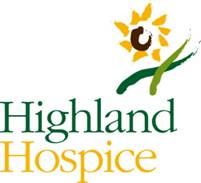 I am very excited to announce that Sophabulous Steps will be teaming up with Ben Miller to put on a DANCE EVENT in aid of Highland Hospice on Saturday 15th June in Fort Augustus Village Hall. The Highland Hospice is an extremely important local charity. They provide support for the physical, psychological and social needs of adults suffering incurable, life limiting diseases across the Highlands. The hands on care they provide, heavily relies on the support of donations. In the effort of fundraising for this important and indispensable charity, Sophabulous Steps is hosting an afternoon of step-dance with Sophie Stephenson accompanied by Ben Miller on Border pipes. The afternoon will comprise a demonstration of Scottish Step-Dance along with workshops for all ages and levels of experience. Whether you are new to step-dance and are giving it a go for the first time or have experience in step-dance or other dance forms, this event encourages everyone to come along, join in, and get involved in raising money for this worthy cause. Dance Workshops, Saturday 15th June 2013 2pm-2.30pm: Age 5-10 2.30pm-3.15pm: Age 10-15 3.30-4.30: Adults (age 16+) Step Dance is a fun, active and social activity for all ages. Accompanied by a LIVE MUSICIAN, the workshops will give people the opportunity to actively engage with our traditional music and learn percussive style dance steps to strathspeys, jigs and reels. For wee ones, it helps them to learn rhythm and improve their co-ordination whilst, for adults, it is a gentle way to improve stamina and strengthen muscles. The workshops will be an introduction to step-dance for people who have never tried it before, and also welcome intermediate to advanced level step-dancers. Advised to wear hard soled shoes and bring a bottle of water! Please contact Sophie on 07783433807 or email [email protected] to book a place at the workshop! www.sophabulous.co.uk www.facebook.com/SophabulousSteps http://highlandhospice.org Whilst studying towards a degree in Scottish Ethnology, I did research into the step-dance tradition in Scotland and in Cape Breton as part of an Emigrant Traditions course at the School of Scottish Studies. As part of the research I sent out questionnaires to many step-dancers, to explore the evolution of the tradition and the similarities/differences between the transmission and performance of step-dance in these two places. My informants included Dawn Beaton, Mary Janet MacDonald, David Rankin, Tara Rankin, Mats Melin, Nic Gareiss, Michelle Greenwell, Abbie MacQuarrie, Seonag Buxton and Deirdre Graham. The most striking, yet inevitable, difference between the traditions in these two contexts was that in Cape Breton, for the most part, step-dance is still learned and passed on in family and community setting. Whereas, in Scotland, step-dance exists in a revivalist context with learning and teaching environments which are, in most cases, formalised classes or workshops. As I'm a step-dancer myself, I of course would have my own responses to these questions and I thought it would be interesting for me to share them with you here... 1. How were you first introduced to step dance? Where/from whom did you learn to dance?How were you first introduced to step dance? Where/from whom did you learn to dance?I was first introduced to step-dance aged 10 when I saw a performance by Harvey Beaton and Buddy MacMaster in Inverness (Scotland). After taking some classes at my local Fèis, the following year I attended a course with Harvey Beaton (Cape Breton) and Donal Brown (Scotland) at Sabhal Mòr Ostaig on the Isle of Skye. Following that I attended Fèisean where I learnt from Frank McConnell, Deirdre Graham and Jane MacNeil. and laterly Margie Beaton at Ceolas. 2. Do you have a background in dance or any other cultural forms (music, song)? If so then what style of dance and did you have any formal training?
3. On what occasions/ in what contexts do you usually perform? Do you usually perform as a solo dancer or with other dancers?
4. Is there a particular type of footwear which you chose to wear for dancing?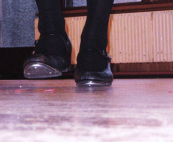 Dancing feet! Dancing feet! When I was younger I would always wear my school shoes for dancing. This would be my pre-requisite for buying new school shoes and I would end up dancing in the shop to try them out! A few years ago, I did tap dancing in a production of the musical 'Thoroughly Modern Millie' and, after buying tap shoes for the show, I started wearing tap-shoes for step-dancing. This is good for concerts because the taps amplify the steps and give a crisp, clear sound. However, I am always on the look out for a good pair of leather-soled shoes for more intimate settings and accompanying puirt-a-beul for example. Also, leather-soled shoes give me a better sense of contact with the floor and a range of percussive sounds and tone which you don't get with taps. 5. What, in your opinion, are the signs of a ‘good dancer’?
6. How important is music to the performance? Are there any tunes in particular which you prefer or would select to dance to?Music is very important. It is the rhythmic relationship between the musician and the dancer which makes dancing so enjoyable for me. Although there are some tunes which are typical for step-dancing I enjoy dancing to most tunes. The older tunes with a strong pulse seem to fit best with some of the traditional steps but I also quite like trying out new steps to fit modern, “quirky” fiddle and pipe tunes. With strathspeys, however, I find that when the tunes are played slow and pointed (in a style more suited to country dance or Highland dancing) the steps have to be altered in a way that they loose their drive and punchy rhythm. 7. When you perform do you usually follow a certain routine or pattern/combination of steps?
8. Would you say that you had a ‘repertoire’ of dance steps? Would you be able to put a number to how many steps that includes? How do you remember steps and identify individual steps?Since I started teaching step-dance I have become more aware of a repertoire of steps, but even still I make steps up on the spot sometimes to teach my pupils and demonstrate how the essential movements (shuffle, hop, tap, heel click ect.) may be put together and combined in a multitude of different ways giving you endless possibilities for rhythmic combinations. I don't really have names for most of the steps but normally as long as I can remember the rhythm then I will remember the step. 9. Do you make up your own steps? How much space, do you feel, is there for variation and improvisation within the tradition? Have you ever tried/performed/considered combing ‘traditional’ step dance with other forms/styles of dance?
10. Why do you dance?Because I love it! There is something about the physical interaction with music which gives me a buzz, it quite literally gets the heart bumping. I love listening to traditional music in all it's various forms – at concerts, on the radio, on my ipod – but often the tunes are calling out for us to move, dance, join in, engage with the music and with each other. Even just watching dance puts a smile on my face, if I'm not already on the dance floor myself!
|
Sophie's BlogThis blog is for all things dance related... I post videos, articles information and news, making it a great way to keep up with what's going on the the step-dancing world! If you have any news to share, or would like to contribute something to this blog, then feel free to send your blog post to [email protected] and I will put them up on the website! Categories
All
|

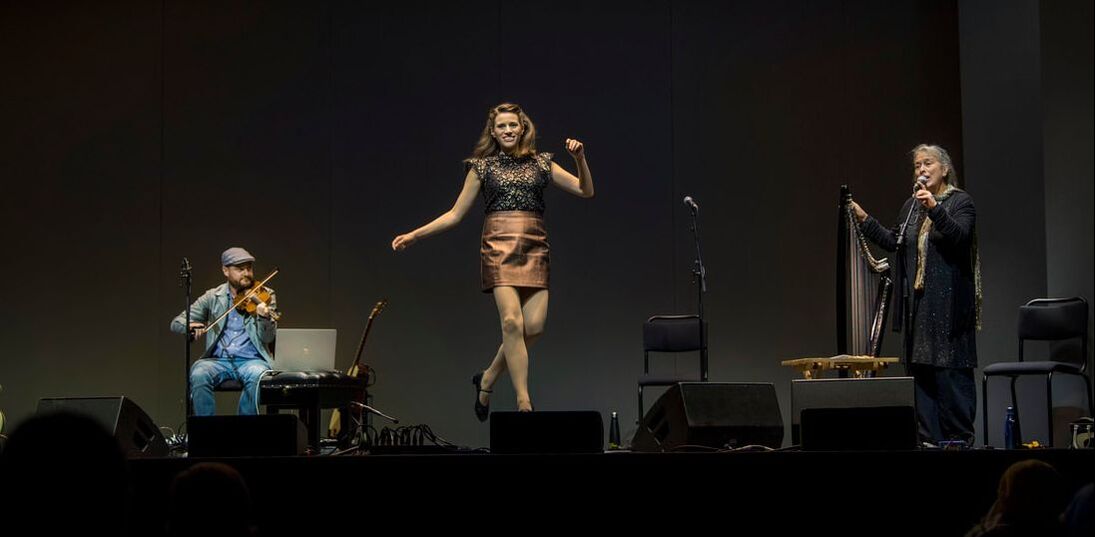
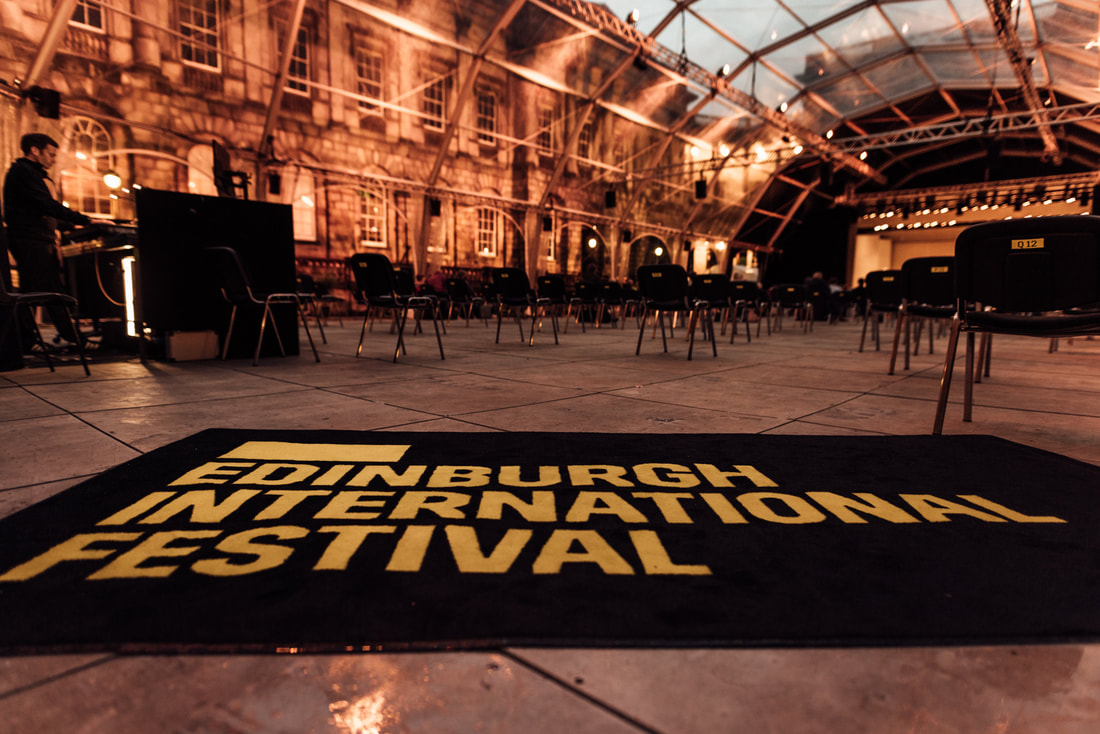
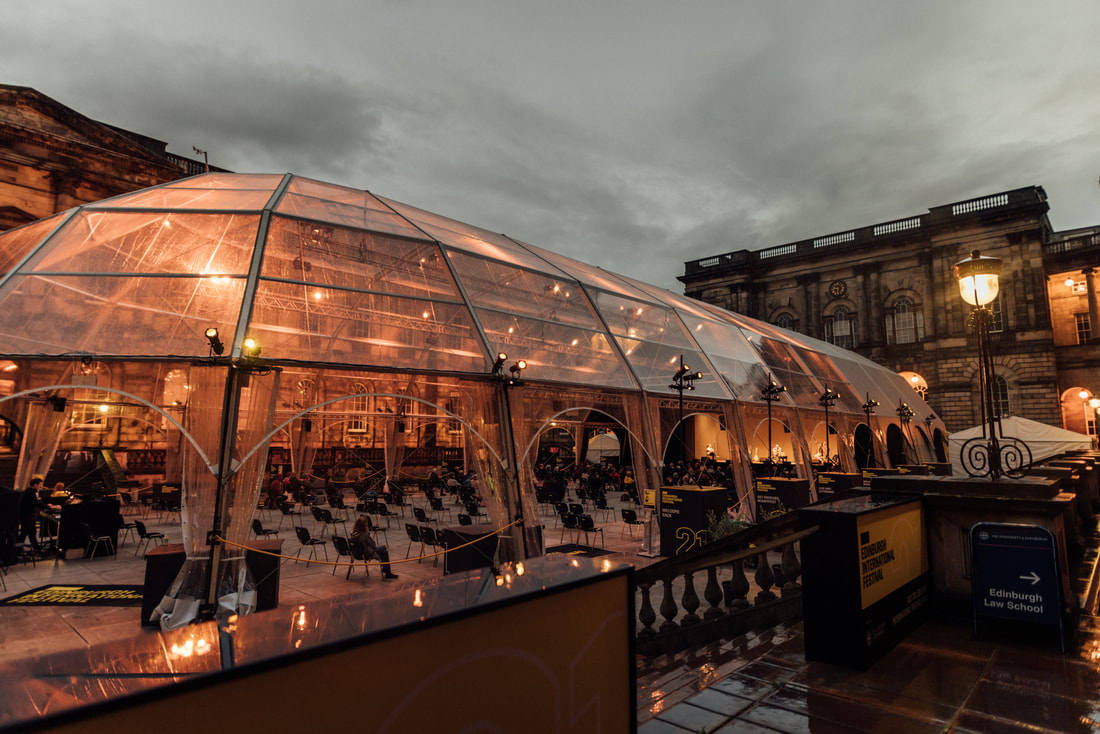
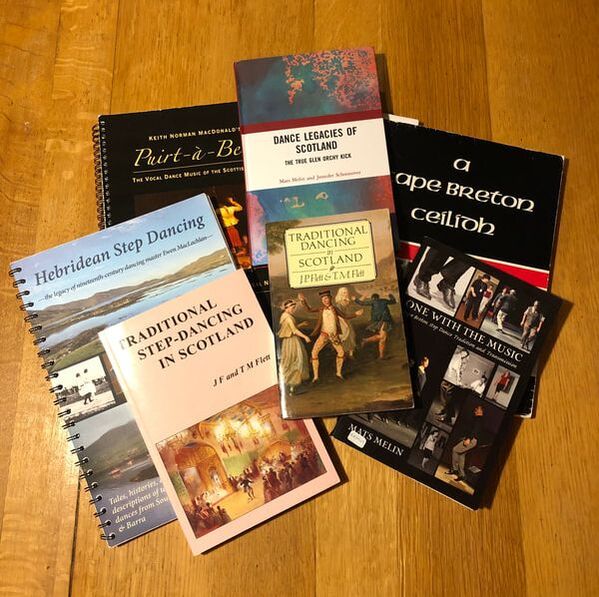
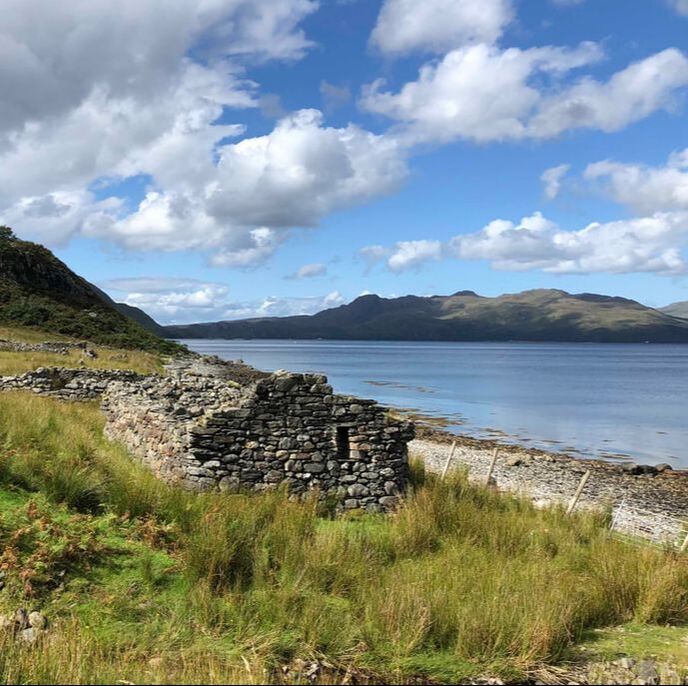
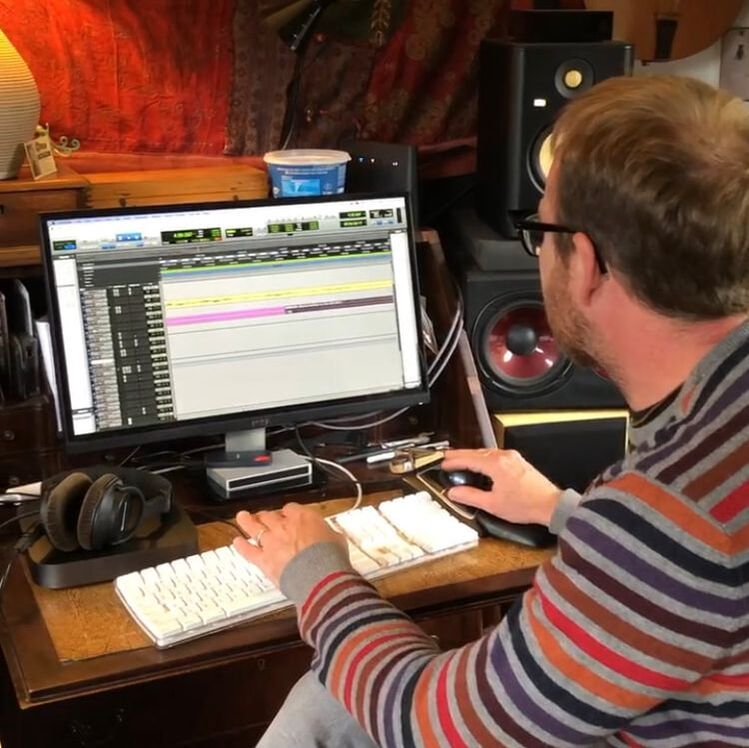
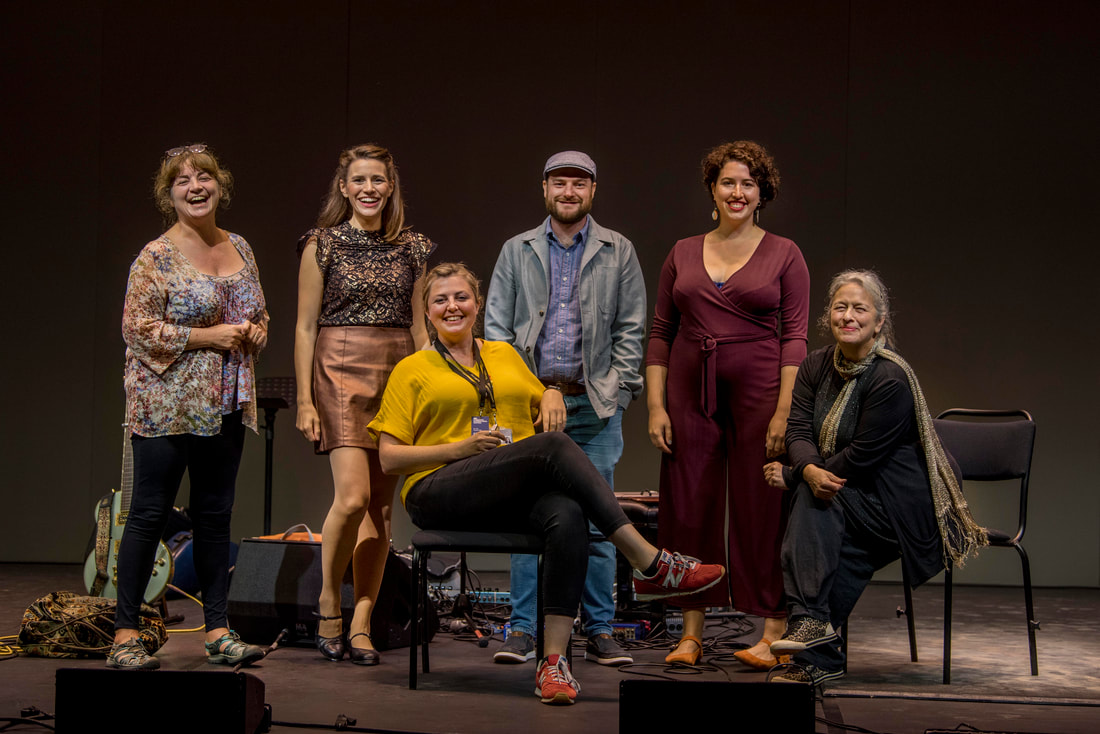
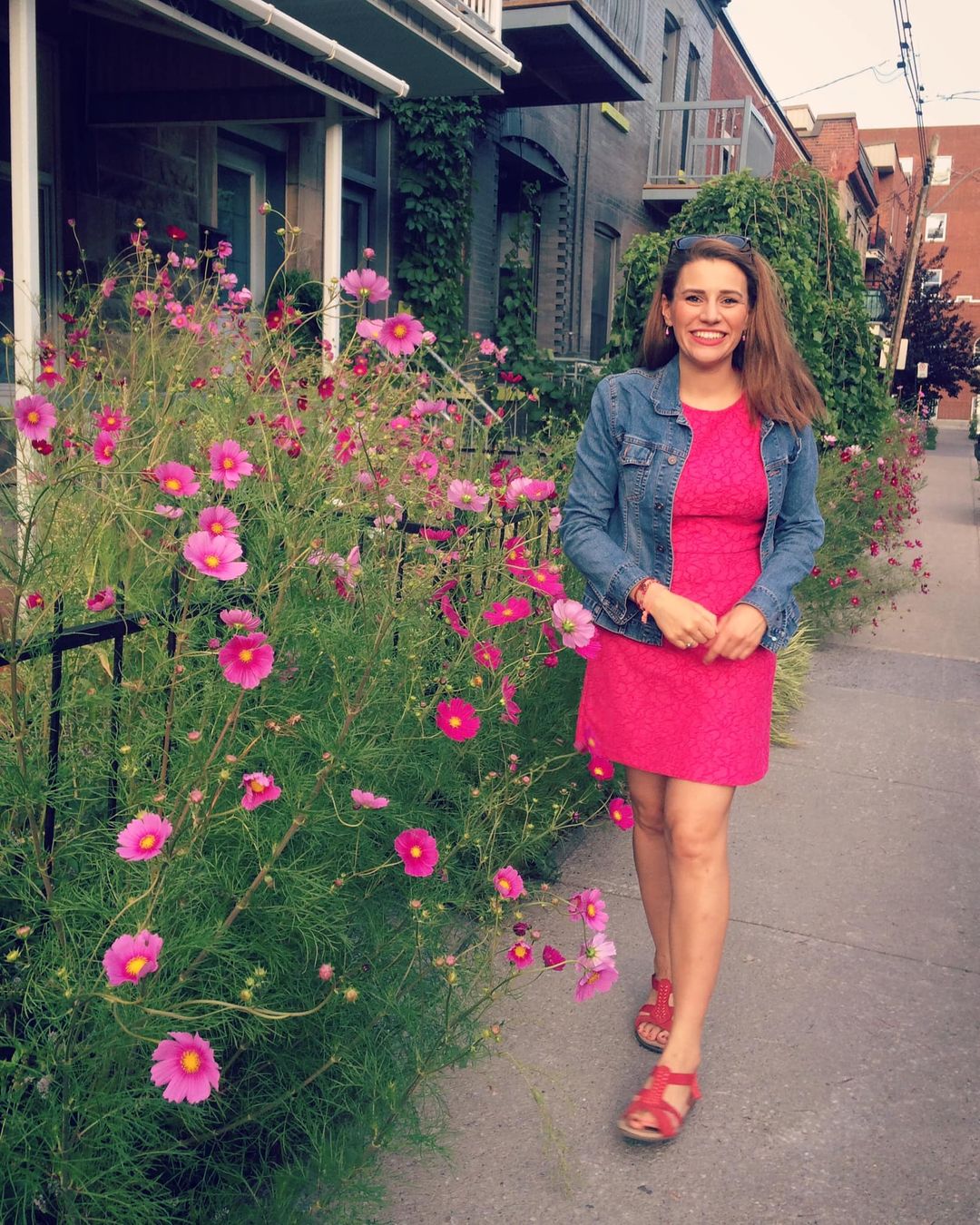
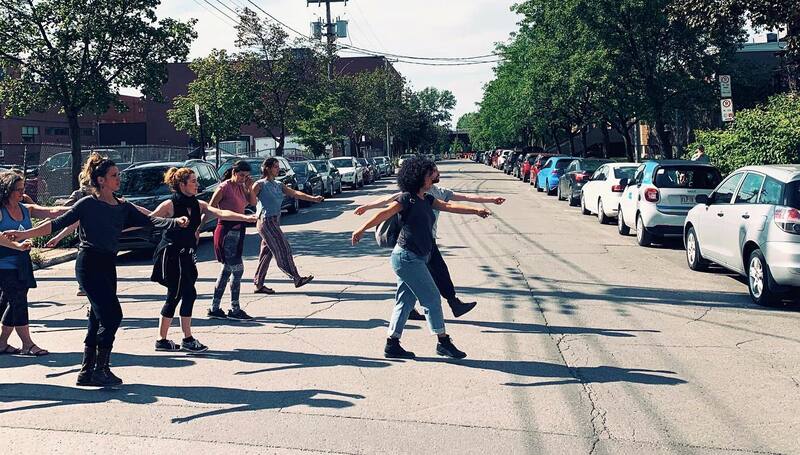

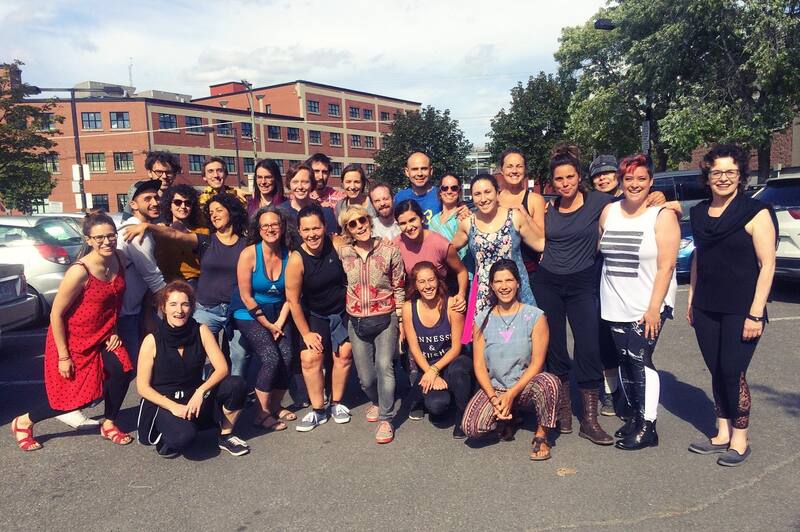
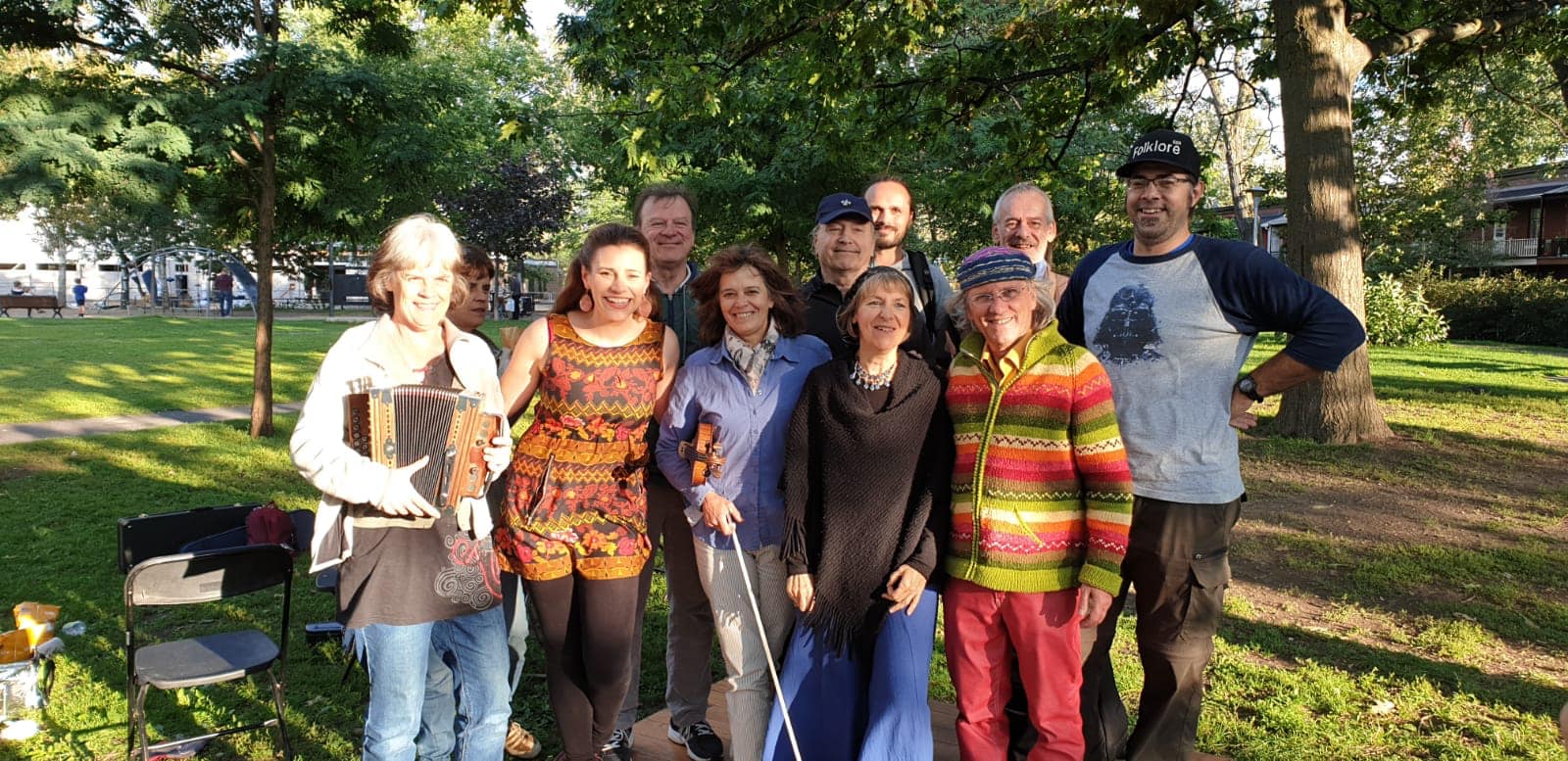
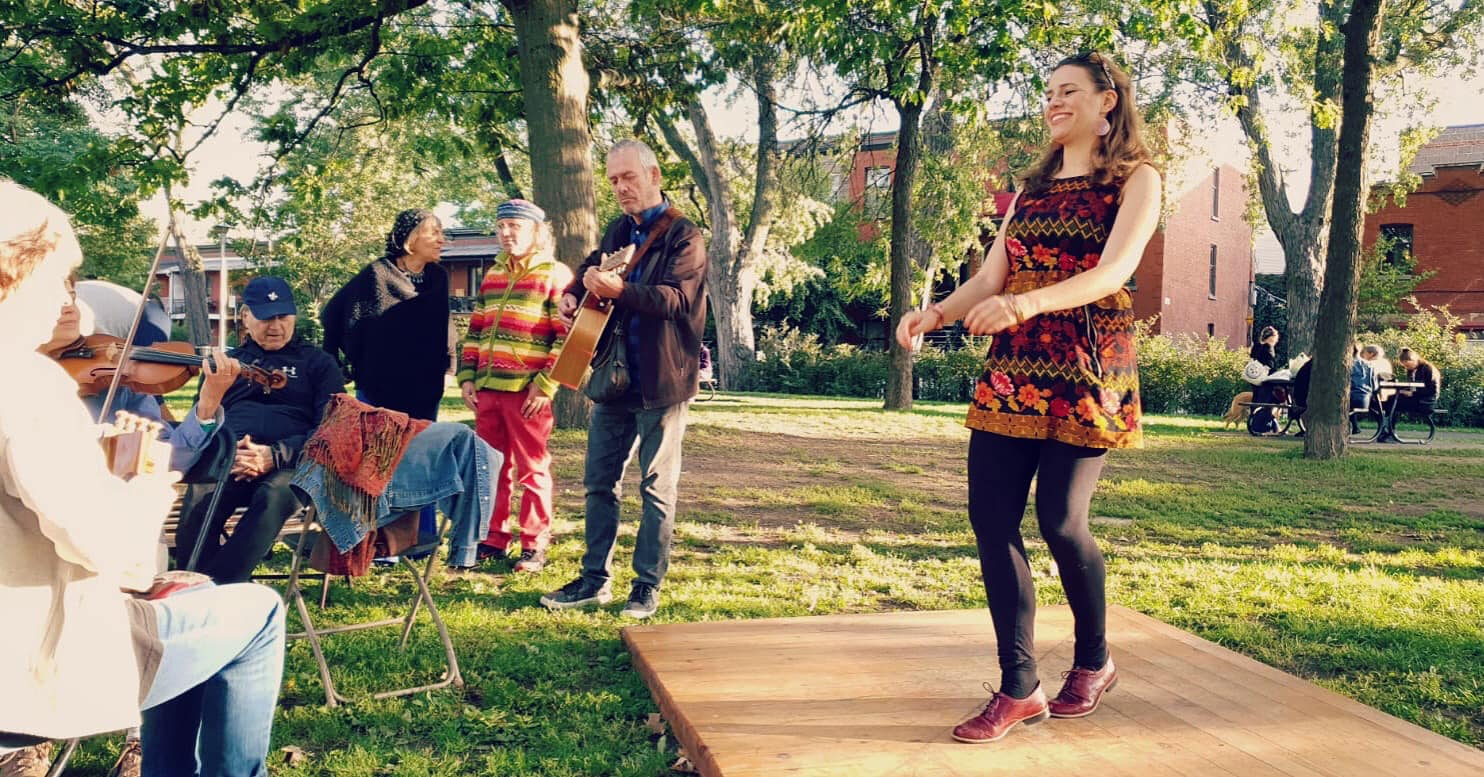
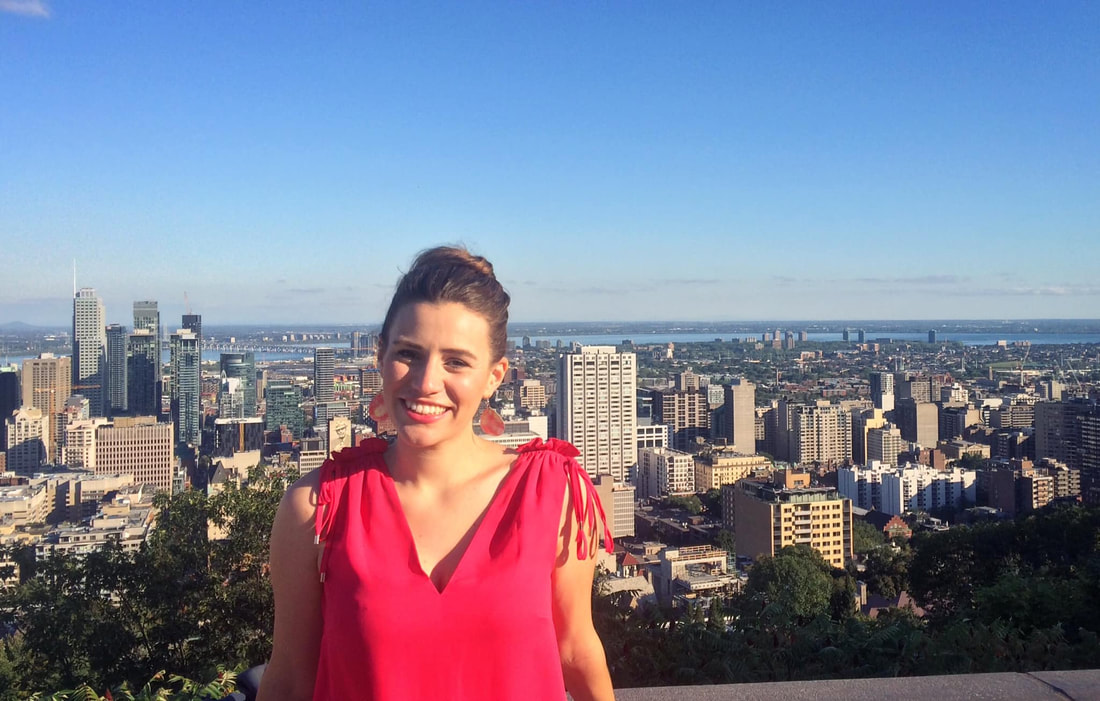
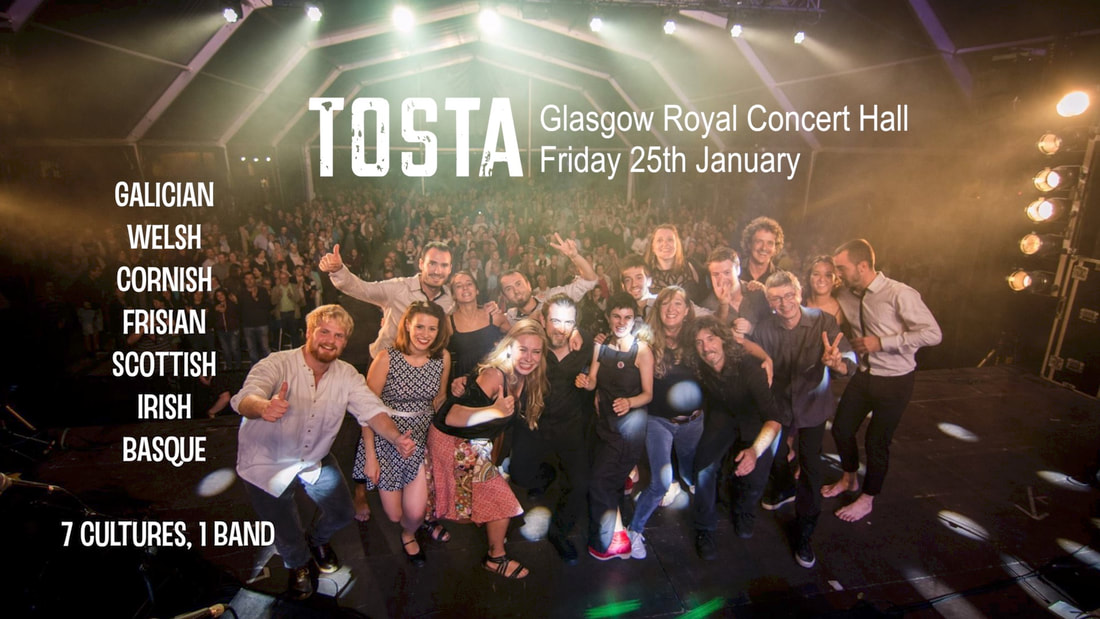
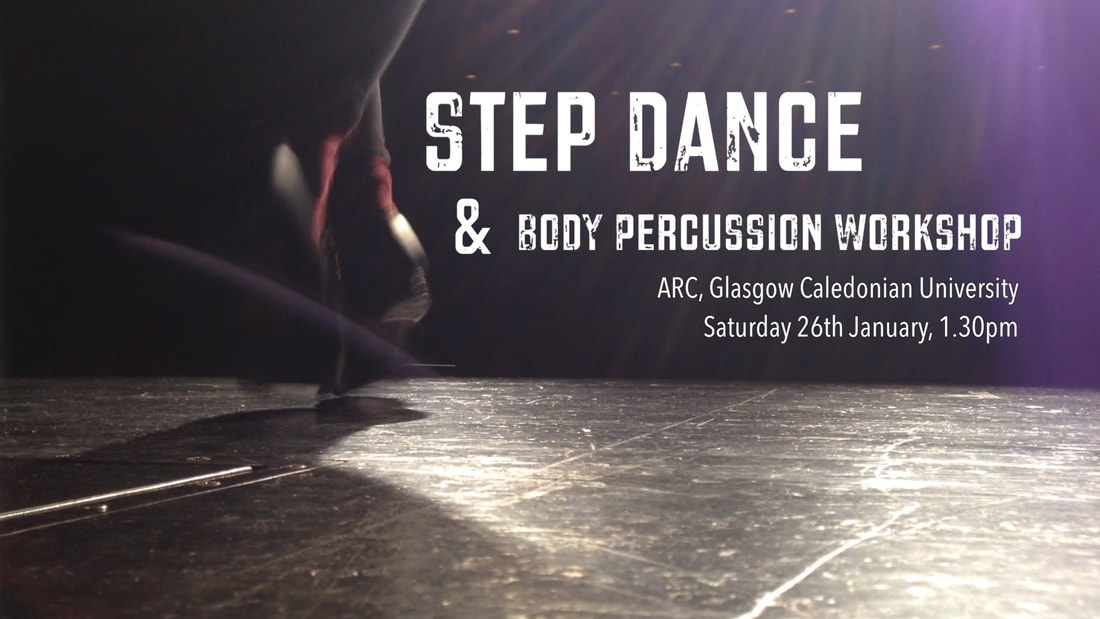
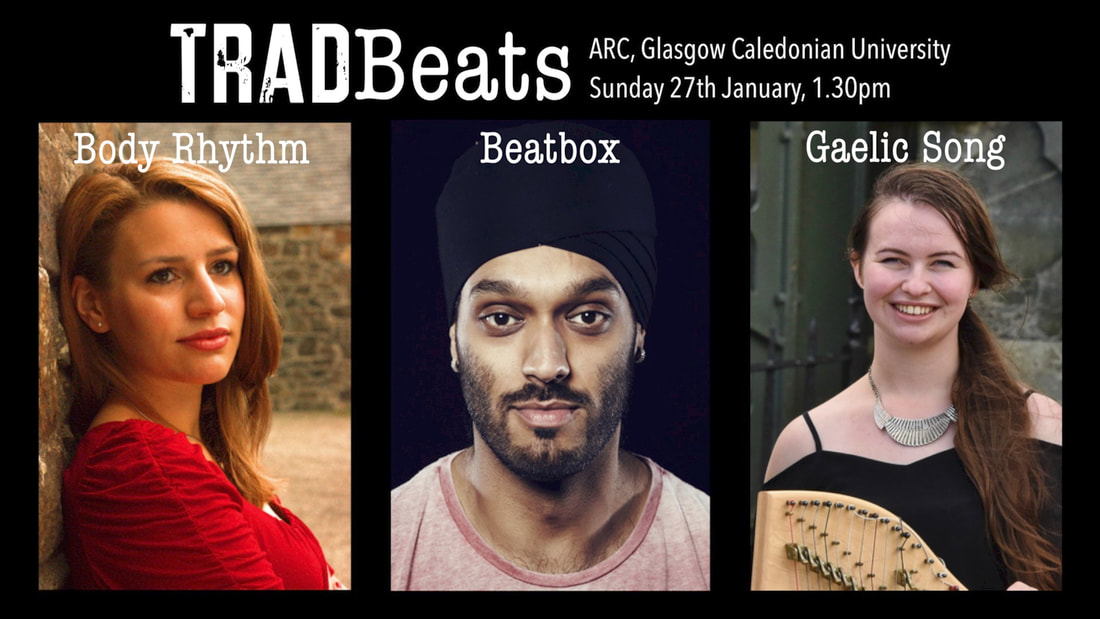
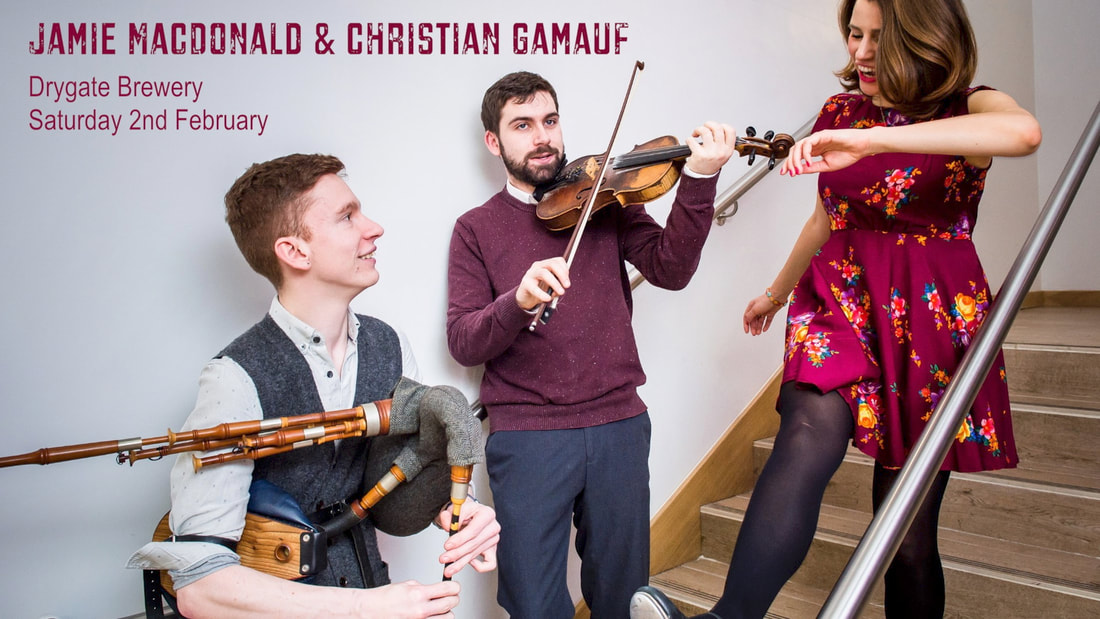
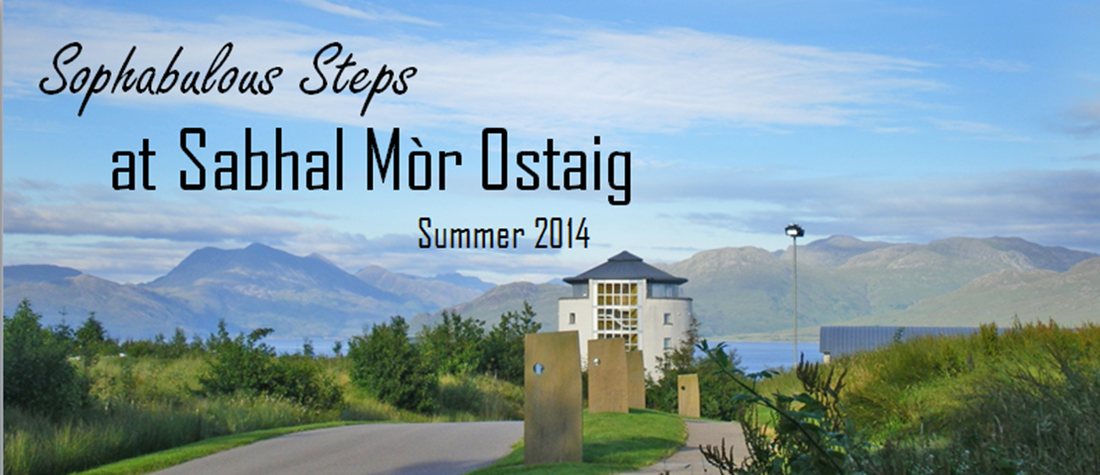
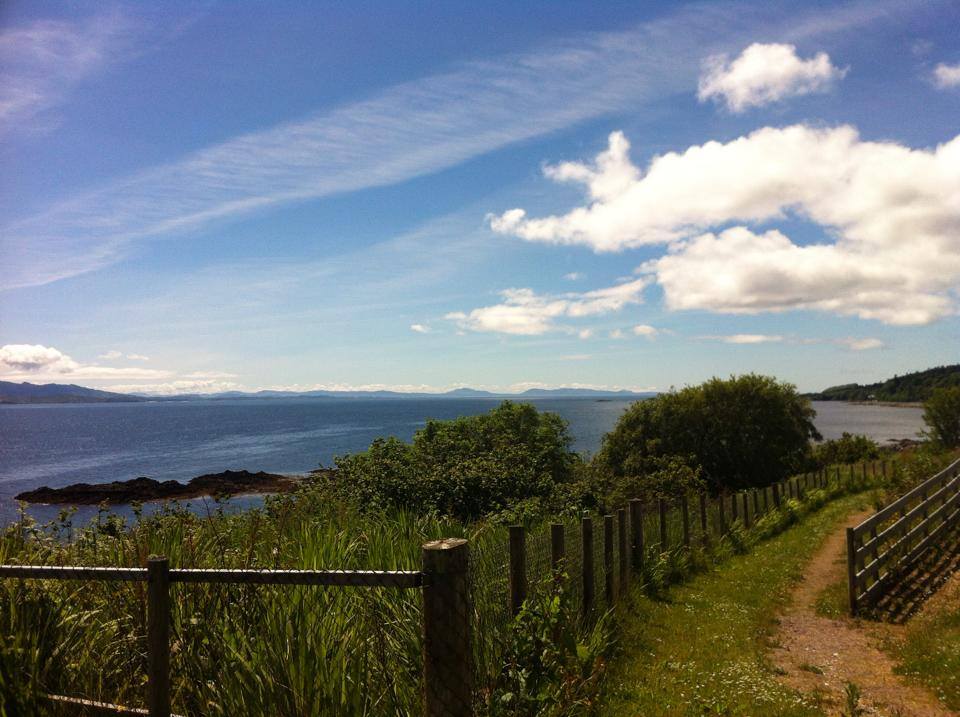
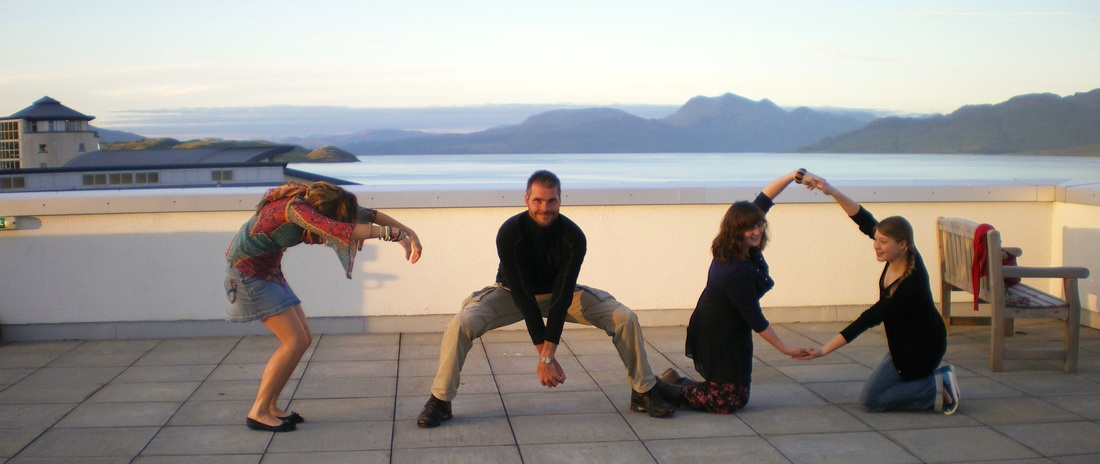
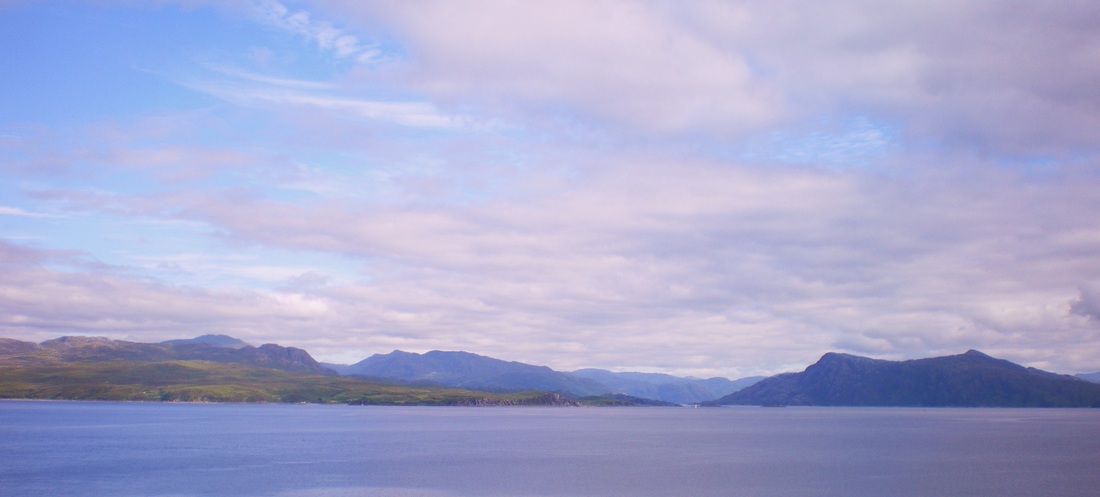
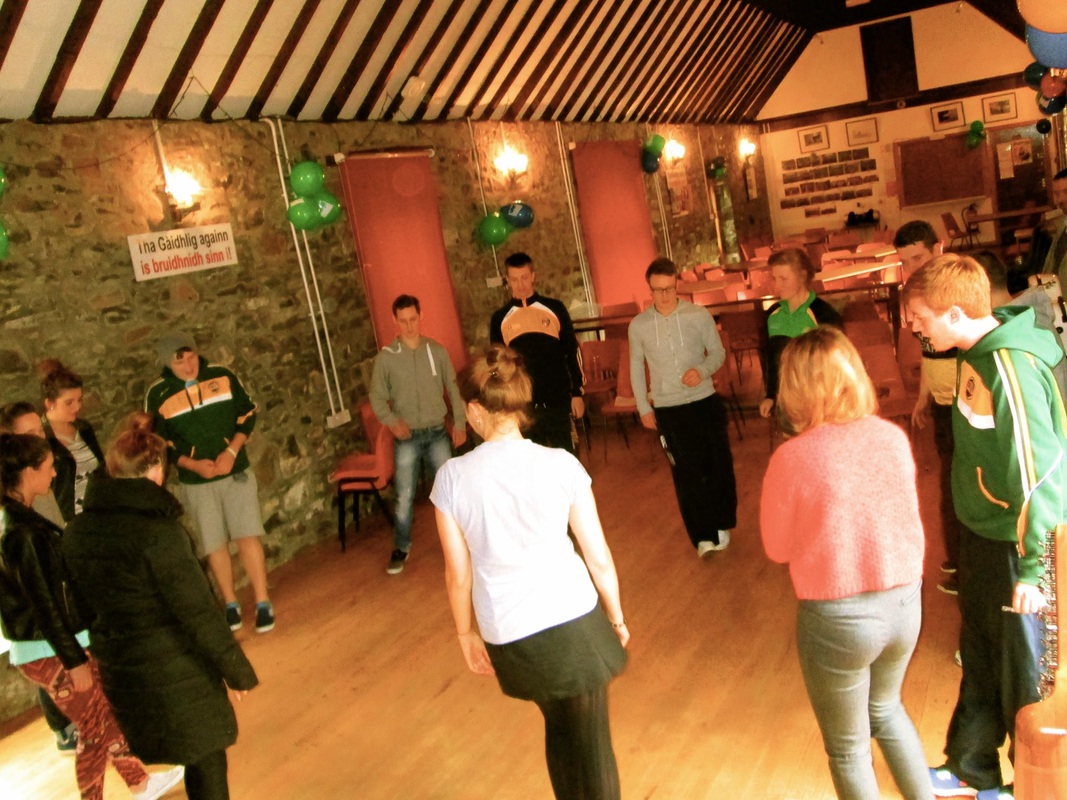
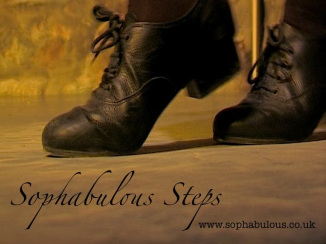

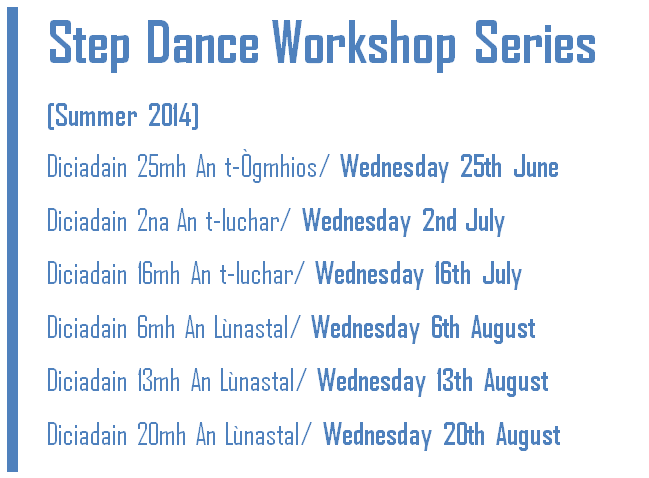
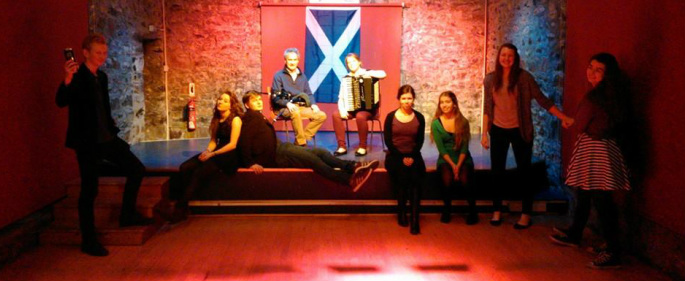
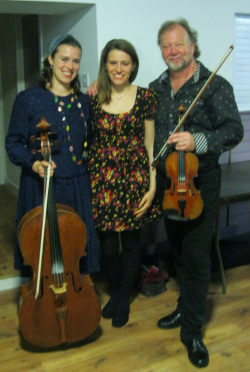
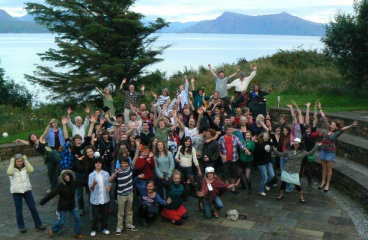
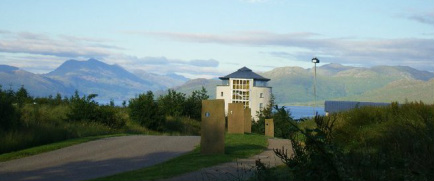
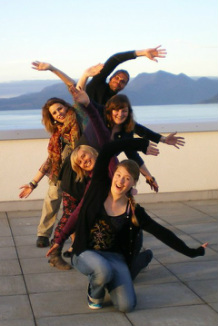
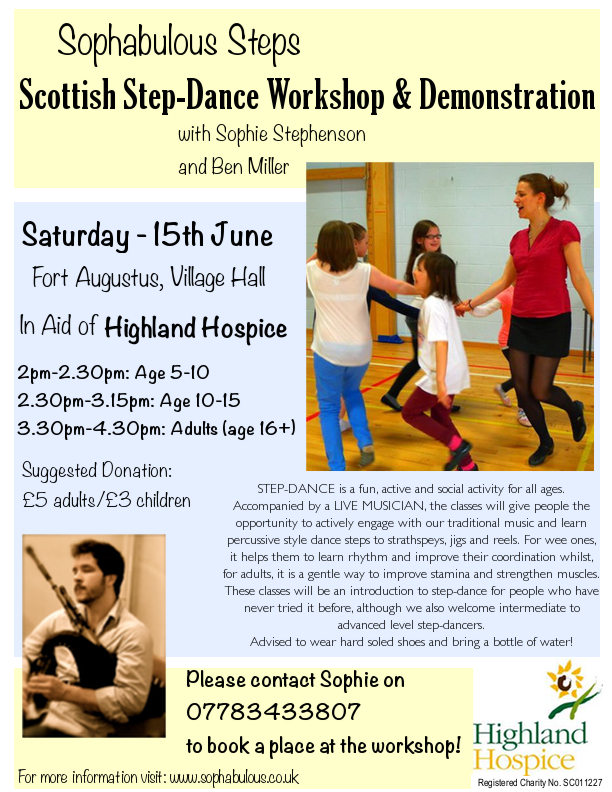
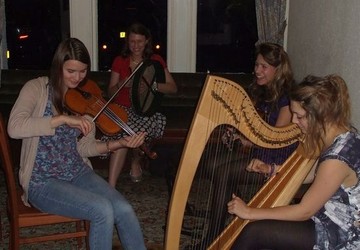
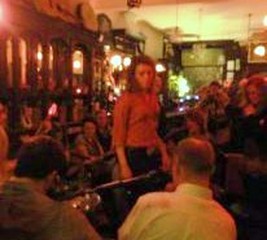
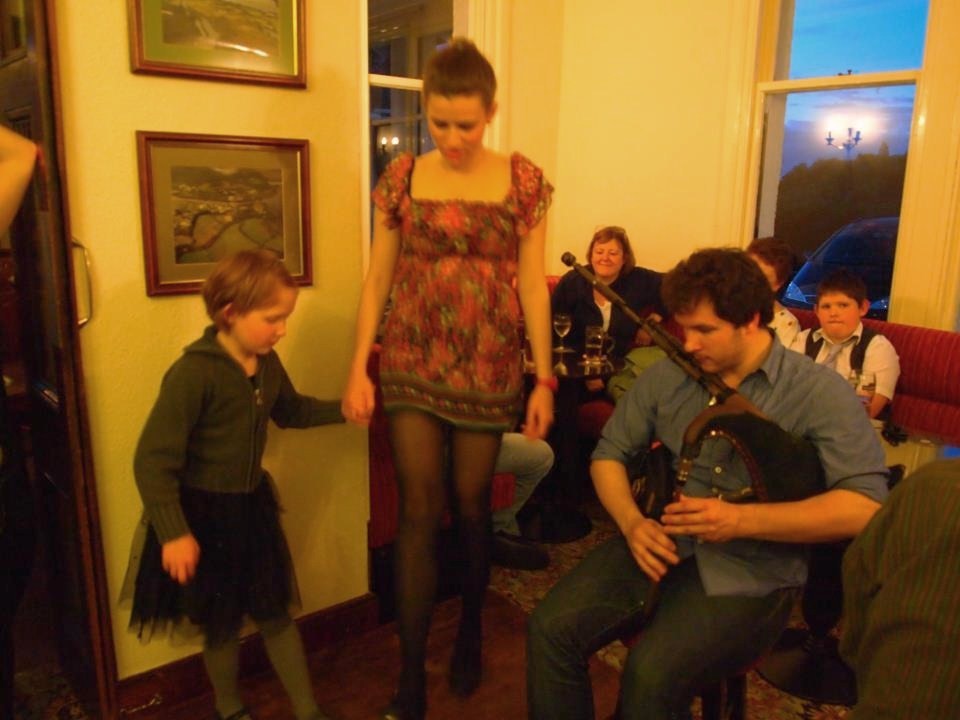
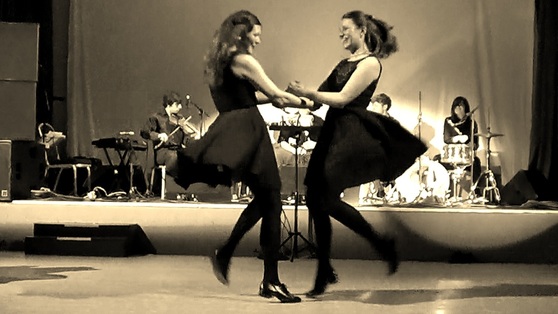
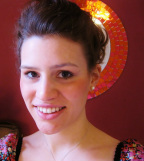
 RSS Feed
RSS Feed
